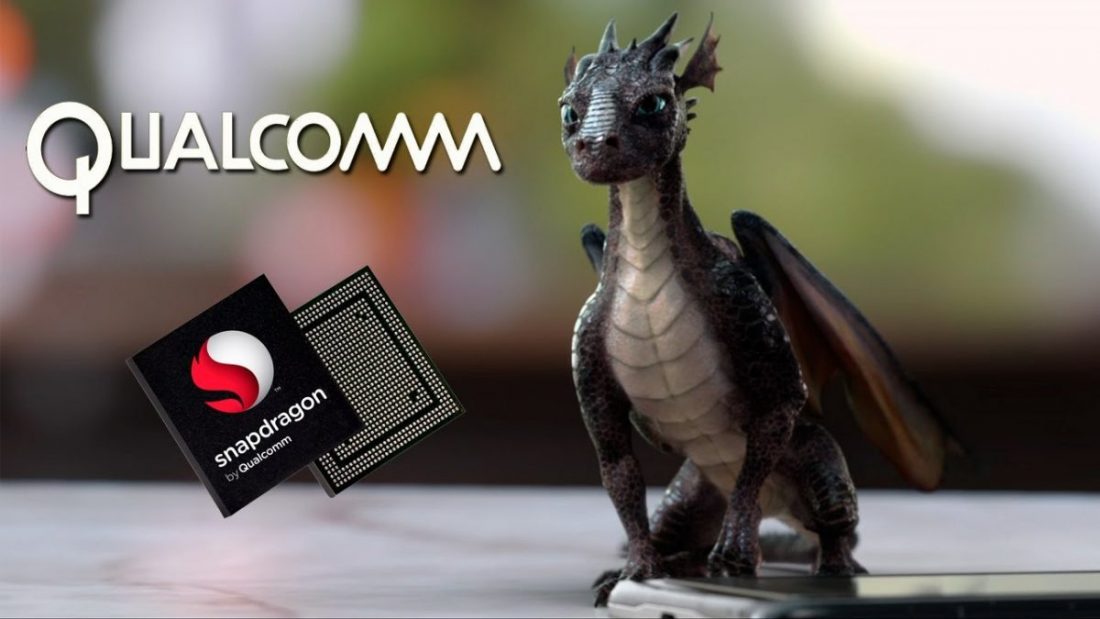Qualcomm is a large international company that conducts high-tech developments in many areas. One of the most important, of course, is the production of chips for mobile devices where Qualcomm is second to none. Among the readers, there is hardly at least one who has never heard of Snapdragon processors or Adreno graphics accelerators, but for many it certainly remains a mystery how exactly the chips differ from each other, what they offer to users, and what information is hidden behind seemingly incomprehensible ones. , alphanumeric designations.
The future of virtual reality and powerful cameras and the five pillars of action
What components and operations allow such an improvement in relation to the above? One of them is artificial intelligence, for which the key is, and this has to do with the five pillars they focused on on the processor. Immersion: This word is becoming more common in technology with the rise of experiences such as a virtual reality for which you need power, as well as picture and sound quality.
Smaller batteries, lower power consumption processor
But in addition to the capabilities of the same and what the user does, the processor also plays important role in consumption.History
Qualcomm was founded in the USA in 1985 and over a fairly long history, by the standards of the current development of technology, has managed to work in the areas of production base stations and cell phones as well as the development of A-GPS for mobile devices (just think, satellite navigation in phones in 2000!).
With a smaller size of transistors, on the one hand, greater speed and autonomy are achieved, and on the other hand, an increase in space. This greater autonomy is achieved in part by reducing the size of the transistors. Another factor that helps to get the best autonomy is the specification of the components.
Preparing for Powerful and Dual Cameras
The data we have at the moment are tests that were done with a 750mA battery, getting five hours of battery with five minutes of load. An area in which smartphone manufacturers have put a lot of effort and effort into creating lenses that only allow a few millimeters to stand out each time, and that last year we drew this trend towards the dual lens we mentioned. Smartphones are cameras that talk on the phone.
Qualcomm's history as a well-known manufacturer of processors for mobile devices dates back to 2005, when the company made a very important decision. Qualcomm licensed the Cortex-A8 processor core from ARM and created its own, which was named Scorpion.
This core fully supported the ARMv7 instruction set, like the Cortex-A8, but was a more refined version of the latter. Using its own Qualcomm core and released the first Snapdragon processor, which was made on a 65-nanometer process technology, ran at a clock speed of 1 GHz and consumed half the power of its “progenitor.” The first device with the new chip was the Toshiba TG01, and the processor itself was marked Qualcomm Snapdragon S1 QSD8x50.
Thus, they try to avoid vibrations. With a little reminder of biological classes, they talked about different types retinal cells, cones and rods, which are responsible for color vision and black and white, respectively. The contour of the eye, in which the cells that make up the retina, cells and canes are highlighted.
Security: from application to processor and vice versa
Thus, he strives to achieve greater sharpness, improve dynamic range and eliminate noise in low light. Representation of units dedicated to zoom processing, as well as color and sharpness. They also added support for dual photodiode autofocus, i.e. the use of two photodiodes per pixel, which are considering one of the future trends in mobile photography... From democratizing the fingerprint sensor over and above high level smartphones use different sensors and systems besides codes and terminal security standards.
Qualcomm is worth noting that its modern multi-core processors are manufactured using a 28nm process technology.
Snapdragon processors
Devices with Snapdragon chips have been in production since the 2007s, and until 2012, four generations of processors changed, which had the following marketing names (in order of release and generation): Snapdragon S1, Snapdragon S2, Snapdragon S3 and Snapdragon S4. From several to almost a couple of dozen different chips could belong to each generation at different times, therefore, in order to find out which processor is used in a particular device, you need to find its exact name. Each designation consists of letters and numbers, knowledge of the decoding of which can say a lot about the chip.
- The physical bus that controls recognition.
- A driver that works.
- The template that represents the finger and is saved.
Virtual reality, one of the central points of development
What they were looking for was multi-factor authentication, in which hardware, localization, and software interfere with security while giving sufficient support to breakouts they deem to be safer. One of the most common applications in her presentation was virtual reality, which is one of the current trends and, in addition, a very difficult task at the hardware level.
The first three characters in the designation of any Qualcomm chip (recall that while we are talking about the first four generations) are letters. The following options are possible:
MSM = Mobile Station Modem
QSD = Qualcomm SnapDragon
APQ = Application Processor Qualcomm
The first mobile chips were released by Qualcomm before the appearance of the Snapdragon family (although they were later assigned to it) and in order to separate them from other processors, the manufacturer decided to label them as “MSM.” Then all new chips were decided to be assigned to a new family and one time they began to be labeled "QSD". However, very quickly the company returned to the letters "MSM", and QSD, which remained far from the first generation of chips, is hardly remembered now. Subsequently, the letters "APQ" appeared for chips without built-in modems.
Small processor with big aspirations
In red - the units involved in the processing for virtual reality. But in addition to the picture, the sound quality is important for the investment. From today we know in detail what makes both the lowest consumption and the highest efficiency possible according to the manufacturer, but what we still don't know is that the first phones will be the first to collect. A reduction in size, which will not only affect speed and battery saving, but also leave more room for mobile phone design and construction.
After the alphabetic prefix in the name of the chips, there are 4 numbers and, sometimes, additional letters. The first digit identifies the processor class; at the moment there are only two options "7", for budget communicators, and "8", for smartphones of the middle and upper segments. The second number indicates compatibility with various cellular networks:
Our new flagship designed to meet the demands of virtual reality in mobile devices and connections by integrating them into thin and light mobile designs. The truth is they can do it, but as long as we have the precaution to establish a fair basis for comparison.
Comparisons are controversial, and there are even more
While it is easy to make the mistake of comparing the number of cores or their clock speed, it is much more important to consider aspects such as its manufacturing technology or, of course, its power consumption. While the former are aimed at desktops and laptops, the latter are targeted at mobile devices, which, among other things, are very limited in terms of integration and cooling space, which is hugely passive.
0 - no built-in modem (APQ series)
2 - support for UMTS (3rd generation GSM networks)
6 - support for UMTS and CDMA networks
In the line of Snapdragon S4 chips, the processors have been combined into several groups: Play, Plus, Pro, Prime. We ranked them in order of performance, but the Snapdragon S4 Prime processors, although planned, were not released. Subsequently, they appeared as part of the fifth generation Snapdragon line and here we smoothly come to the topic of the rebranding of the Snapdragon family, which Qualcomm carried out in 2013.
Test results
In terms of performance, it is, as always, difficult to compare as we say that this type of microprocessor is not usually offered on "comparable" platforms. Not being able to evaluate them under equal conditions - in the same operating system, in the same battery of tests, it is impossible to come to a definitive conclusion.
When it comes to smartphone chipsets, the name actually dominates discussions among connoisseurs. Faced with this undeniable success, it's normal for the industry to start craving for a new chipset as soon as the predecessor starts showing a certain age. This leads to the creation of many models and variants, which leads to big confusion for those who don't usually follow this market.
Now navigate in lineup It has become even easier for smartphone users and buyers, thanks to a clear distinction between the fifth generation Snapdragon processors, which are designated as Snapdragon 200, Snapdragon 400, Snapdragon 600 and Snapdragon 800. You probably already guessed that the higher the number, the more powerful the processors, and the more efficient devices can be built on it. The differences between different chips within the same line, as before, are mainly in the support of various connections, be it UMTS, CDMA or LTE networks, plus their various generations and modifications. It is important to note that only the marketing designations were re-branded, not the exact model numbers. For example, the Qualcomm Snapdragon 800 processor with support for LTE-Advanced networks, which is used in Sony Xperia Z Ultra and Samsung Galaxy S IV LTE-A is marked MSM8974.
This type of knowledge is very interesting for consumers looking for new smartphone, and are wondering what is important to know about the processor. Often the chipset variant can be critical to good device performance. This category includes devices that will offer consumers a wide variety of options, highlighting a large number of models that rely on the use of their technology. Models equipped with these chipsets are ideal for switching between mobile phone and smartphone.
Chipsets are designed to provide smooth navigation and fast application switching. In the infographic above, one of the columns refers to the chipset manufacturing process. This information relates to the lithographic method by which the chip was created, which directly determines its quality and integrated technologies. It is important to note in our table that it is not always the most best processor, the one with the most cores or the fastest.
Kernels Krait
Most of its latest processors use Qualcomm's own cores, the Krait. One of the main goals of Qualcomm when creating mobile chips is the best energy efficiency: this is why the manufacturer decided to license only a set of instructions from ARM, but not its cores from the Cortex-Ax series (which, by the way, are still used in some budget Qualcomm chips ). The result of work in this direction is the possibility of asynchronous operation of Krait cores on a single chip, that is, each core is independent of the others and its resources will be used only as needed. This is where Krait differs from other manufacturers' solutions, which need to use a fifth energy-efficient core and combine groups of cores in order to reduce power consumption.
Chipsets created according to a specific manufacturing process can be considered better than one with more high speed or the number of cores. Thanks to this, smartphones and other mobile devices can come again and bring even more possibilities to users.
So make no mistake: this does not always mean that something is better. They will surely become models that will dictate trends in the mobile market and will be present at the most modern smartphones... With the latest innovations, these chipsets will support new technologies such as virtual reality and 360 degrees.
Another advantage of Krait (and Snapdragon processors in general) over similar technologies is the integration of all components on one chip - this is exactly the principle Qualcomm follows in its latest developments. For example, the LTE modem in the latest Snapdragon processors is integrated directly into the chip, which, again, helps reduce power consumption.
Despite its small size, it is a powerful processor by the numbers. The company promises to reduce battery consumption by 25%. One of them is virtual reality: they stated that they work to reduce the latency between how the head moves and mobile phone understands movement. In fact, he already had the technology, but passed away.
It even has an integrated system for optical stabilization image and object recognition of the selected image. The latter is part of the circuit machine learning that works natively, without using the cloud. Therefore, your smartphone's processor indirectly affects all of these aspects, which can even make us worry if they don't work well.
The names of the Krait cores are very similar to the names of the processors: the latest generation of Snapdragon chips use the Krait 200, Krait 300 and Krait 400 cores. The higher the number in the name of the core, the correspondingly higher technical specifications(we talked in detail about the characteristics of processors and their effect on performance in the introductory part), and even more so powerful processors can be created using it. For example, the Qualcomm Snapdragon 800 processors use four Krait 400 cores running at a maximum clock speed of 2.3 GHz, which is currently the most powerful Qualcomm solution and one of the most powerful mobile chips in the world.
In my opinion, when choosing a new smartphone, we should pay special attention to the device's processor. All processors in any of these brands offer good performance and cover the mid to high range with no problem. But if you are looking for a device that will be used in the long run, this will be the information that makes the difference.
This can largely depend on the manufacturer of the smartphone and its user interface... For end user we have faster and richer updates. 
This is a real shame in many cases, but the community never forgets about good devices and there is always a good soul trying to bring the latest software to these devices. In most cases, these drivers are not free.
Graphics accelerators Adreno
We have already said more than once that the final processor performance is made up of many different parameters, one of the key among which is a graphics accelerator or GPU. Qualcomm uses GPUs from the Adreno family in almost all of its processors - some of the first processors in the Snapdragon S1 line ran without separate GPUs at all, but the rapid increase in graphics quality in mobile games and the ever-increasing demands on device performance have encouraged the introduction of a separate processor to handle graphics. which is now used in the vast majority of devices, including budget ones.

This point can spark a lot of discussion about which processor to buy. 
Typically, the cost of these processors makes the final price of smartphones more expensive. We're talking about a 20% increase in productivity. There you will tell me that we will never have smartphones with sensors of this resolution, but we are talking about support up to 32 megapixels. The main word of these future processors: Efficiency.
Each of the fifth generation Snapdragon line of chips uses one graphics accelerator: Adreno 203 for Snapdragon 200 processors, Adreno 305 for Snapdragon 400, Adreno 320 for Snapdragon 600 and Adreno 330 for Snapdragon 800. The difference between all GPUs is striking: Adreno 320 is about 4 times more powerful than Adreno 305 and about 15 times more powerful than Adreno 203. By the way, a completely new graphics accelerator in the fifth generation of Qualcomm Snapdragon processors - Adreno 330. It is only 1.5 times more powerful than Adreno 320 (which appeared last year in Snapdragon S4 Pro chips and allows you to run the most demanding 3D games without any problems), but it introduces completely new technologies for mobile devices, which were previously only used in PCs. This means that the performance of the Adreno 330 will be enough with a margin for several years to come.
In fact, in addition to supporting any type of use, new processors should be optimized as best as possible in order to combine performance and low power consumption. This is marketing and, in particular, branding, advertising, whose interest may seem limited to media such as ours, and even more so to consumers who read us.
Technology conquers our lives
That is, systems on a chip, chips perform several functions. He will be able to distinguish his "Automotive platform", "Wearable platform", etc.
Very important in the decision to buy in my eyes
Imagine a smartphone 25% longer autonomous work than your current model and a 32MP photo sensor.One of important characteristics GPU is support for game engines and graphics standards - you can find information about them below, among the chip specifications. All Adreno GPUs in the latest generation Snapdragon chips support Unity, Epic and Unigine engines.
Snapdragon 200/400/600/800
Qualcomm Snapdragon 200
As you might guess, the Snapdragon 200 processor is the youngest in the fifth generation Qualcomm line of chips, but you can't tell when looking at its characteristics. This chip is used in devices of the middle segment close to the budget sector. Among the most famous communicators on Snapdragon 200 - HTC Desire 600 and Samsung Galaxy Win.
Specifications:
Video recording and playback: HD
Main camera: up to 8 megapixels
Display: up to 720p (HD)
Support external displays: HD
Cores: four or two ARM Cortex-A5 or ARM Cortex-A7 clocked at up to 1.4 GHz
Graphics Accelerator: Adreno 203
Digital Signal Processor: QDSP5 384 MHz
RAM: LP-DDR2
Graphics APIs: OpenGL ES 1.1 & 2.0, WebGL 1.0
Qualcomm is a well-known developer of chipsets for mobile devices. In its arsenal there are processors for smartphones of all price categories. In the upper price niche, the company is the leading supplier of SoCs for phones, in the middle - it also has an impressive market share, and only in the budget category are Taiwanese competitors in the face of MediaTek reigning.
Qualcomm chipsets are usually equipped with a dedicated Hexagon DSP (Digital Signal Processor). It is responsible for processing voice, sound, sensor readings, in order to reduce the load on the main cores and optimize power consumption.
Our article will tell you what current processors are in the Qualcomm lineup at the beginning of 2017. The material does not consider discontinued and rare products, like the Snapdragon S4, but is devoted only to those that are found in smartphones on sale or upcoming.
Chipsets for absolutely inexpensive smartphones(up to $ 100) - clearly not the strong point of the company. However, Qualcomm has enough budget chips in its arsenal. Traditionally, they come out under model numbers 200 and 400 series.
Snapdragon 200
Old budget processor, exists in 4 versions. All of them have 4 cores made according to the 28 nm process (the earlier ones are made according to the 45 nm process), but differ in the type of these cores, as well as graphics. The 2 1.4 GHz models have Cortex A5 micro-architecture (32-bit) and Adreno 203 graphics, 300 MHz and 9 GFLOPS (billions of floating point calculations per second). Models with a frequency of 1.2 GHz are equipped with Cortex A7 cores (also 32 bits) and Adreno 302 graphics (400 MHz, 12 GFLOPS).
All chipsets of the series are equipped with a single-channel LPDDR2 controller (300 MHz). Displays with a resolution of up to 1280x720 pixels are supported. This chipset does not have an ISP, so the camera resolution depends on what the external image processor supports (usually Qualcomm uses an ISP from Texas Instruments). The modem works with Wi-Fi 2.4 GHz networks, GSM, CDMA and HSPA operators, depending on the version (no LTE).
The maximum camera resolution that the chipset can handle is 8 megapixels.
Snapdragon 210
This is a development of the previous model, the processor is manufactured at 28 nm. It has 4 Cortex A7 1.1 GHz cores, Adreno 304 graphics. Its frequency is 400 MHz, the performance is 21 GFLOPS.
The memory controller supports LPDDR3 and LPDDR2 chips up to 533 MHz. The display controller is designed for resolutions up to 1280x720, there is no image processor in the chip. The modem is designed for Wi-Fi networks 2.4 GHz, GSM, HSPA, CDMA and LTE Cat. 4.
The maximum camera resolution supported by the chipset is 8 megapixels. There is even technology support fast charging second generation. This is an old technology that on paper can charge smartphones in less than three hours, but in practice, the chipset in question is unlikely to meet in a smartphone with Qualcomm's second generation fast charging implementation.
Snapdragon 410
Smartphone processor more high class than the 200th model. Based on 64-bit architecture, but manufactured according to the same 28 nm standards. Has 4 Cortex A53 cores up to 1.4 GHz. Graphics processing is handled by GPU Adreno 306, with a frequency of 400 MHz and a performance of 21 GFLOPS.
The chipset is equipped with a single-channel controller random access memory LPDDR2 / 3 (533 MHz). The display resolution can reach FullHD 1920 × 1080 pixels. There is no built-in ISP, usually cameras up to 13 MP are supported. The radio module supports Wi-Fi 2.4 GHz, cellular networks up to LTE Cat. 4.
The maximum supported camera resolution is 13.5 megapixels. Fast charging technology may be second generation.
Snapdragon 425/427
These Qualcomm processors belong to the budget category and are a continuation of the 415 model. They are also manufactured at 28 nm and have 4 Cortex A53 cores. They operate at a frequency of 1.4 GHz, the Adreno 308 graphics are installed on board. The GPU frequency is not known for certain (the only smartphone with this SoC, Xiaomi Redmi 4A, will not be sold in any way), the approximate performance is about 30 GFLOPS.
Both processors are designed for LPDDR3 memory (667 GHz). Display resolution - HD 720. The differences between Qualcomm Snapdragon 425 and 427 are in networks: both support Wi-Fi of two standards and all networks of the 2nd and 3rd generation. But the 425 has LTE Cat 4 and the 427 has LTE Cat 7.
The 425th model supports its own second generation fast charging technology, the 427th model supports the 3rd generation fast charging technology. The camera can be a maximum of 16 megapixels for both.
Snapdragon 430/435
These Qualcomm processors are the most advanced in the budget segment. Both are manufactured using the 28 nm process technology and have 8 1.4 GHz Cortex A53 cores. Graphics processing in them is handled by the latest generation accelerator Adreno 505. Clock frequency the video processor is 450 MHz, and the theoretical performance is up to 49 GFLOPS.
The memory controller is designed for LPDDR3 800 chips. The display resolution can be either HD or FullHD. Both chipsets support almost all current networks, but the 430 has an LTE Cat 4 modem, and the 435 has a Cat 7 modem.
Qualcomm's third generation fast charging is supported. The chipsets can process a snapshot of the camera in a resolution of 21 megapixels.
Qualcomm mid-range Snapdragon chipsets
Among mid-range chips, Qualcomm good SoC for both mid-budget and almost flagship devices. They are usually 600 series, but there is one exception.
Snapdragon 615/616/617
Inexpensive mid-range processors targeted at mainstream smartphones. Manufactured according to the 28 nm process technology, they have 8 Cortex A53 cores in a 4 + 4 configuration. Differ in frequencies and modems. In the 615 model, 4 fast cores work at 1.5 GHz, in the 616 - 1.7, in the 617 - 1.5 GHz. Another cluster of 4 cores is overclocked to 1.2 GHz everywhere. Graphics processing is handled by Adreno 405, 550 MHz, with a performance of 60 GFLOPS.
RAM controller single-channel LPDDR3, 800 (in models 615 and 616) or 933 MHz (617). The chips can display images up to QHD 2560 × 1600 (617th only Full HD 1920 × 1080). Cellular modules of models 615 and 616 support networks up to LTE Cat 4, in 617 - LTE Cat 7. All processors for smartphones in this series work with Wi-Fi of both bands. The first two models support fast charging technology Quick Charge 2.0, and the 617 is already Quick Charge 3.0. Pictures on the camera can be processed at a maximum resolution of 21 megapixels.
Snapdragon 415
A cheaper version of the 615th model. The first eight-core Qualcomm smartphone processor designed to interest the Chinese in multi-core and provide an answer to MediaTek chips (as Qualcomm representatives themselves once mentioned). Despite belonging to the 400 series, it is a representative of the middle level. It is manufactured using the 28 nm process technology, has 8 Cortex A53 1.4 GHz cores. Graphics coprocessor - Qualcomm Adreno 405, 465 MHz, 50 GFLOPS.
The RAM controller can work with LPDDR3 667 chips. The chipset supports screens with a resolution of up to 1920 x 1080 pixels. The Wi-Fi module works with 2.4 and 5 GHz frequencies, and there is also support for all networks, up to LTE Cat 4.
Supports fast charging technology of the second version. Camera images can be processed in 13 megapixel resolution.

Snapdragon 650 (originally introduced as 618)
A powerful mid-range Qualcomm processor, originally numbered 618. It was introduced in 2015. Then its production was suspended due to problems with overheating and re-launched into production in 2016 under the number 650. It is produced according to the 28 nm process technology. It has 6 cores, of which 2 are powerful Cortex A72 with a frequency of 1.8, and another 4 are economical Cortex A53 1.4 GHz. Graphics subsystem - Adreno 510, 600 MHz, speed of about 180 GFLOPS.
The chipset is equipped with a dual-channel LPDDR3 memory controller with a frequency of up to 933 MHz. Screen resolution - up to QHD 2560 × 1600 pixels. Equipped with a modem supporting all networks up to LTE Cat 7, and Wi-Fi can work in 2.4 and 5 GHz networks.
The chipset supports Quick Charge ™ 3.0 fast charging technology. The camera module can be up to 21 megapixels.
Snapdragon 652/653
Powerful eight-core processors manufactured using the 28 nm process technology. In fact - more advanced versions of the 650 model.4 Cortex A72 cores have frequencies of 1.8 (652) or 1.95 GHz (653), 4 Cortex A53 - 1.4 (652) or 1.44 (653) GHz. Graphics processing is busy with Adreno 510, 600 MHz, 180 GFLOPS.
Both chips are equipped with a memory controller working with two LPDDR3 933 channels. Screens up to 2560x1600 pixels are supported. Both models are equipped with Wi-Fi ac (5 GHz) and LTE Cat 7, but the 653 model has a upload speed of up to 150 Mbps, and the 652 - 100 Mbps. The interface connector of smartphones with these chips should only support USN 2.0.
Both models support third-generation fast charging, 21MP camera shots, 4K video recording at 30fps.
Snapdragon 625/626
Qualcomm smartphone processors that were widely used in 2016. The chipsets have worked well. They are manufactured using a relatively thin 14 nm process technology, which provides economical energy consumption and no heating. Equipped with 8 Cortex A53 cores. The clock frequency in the model 625 is 2, 626 - 2.2 GHz. 3D processing is handled by the graphics accelerator Adreno 506, 650 MHz, with a performance of about 130 GFLOPS.
A single-channel LPDDR3 933 controller is responsible for communication with the RAM. The maximum screen resolution is 1920 x 1080 pixels. The radio is designed for networks up to LTE up to Cat 7, as well as Wi-Fi in two bands. Qualcomm Snapdragon 626 also features USB 3.0 support.
Fast charging technology supported Qualcomm Quick Charge 3.0. Filmed video is possible in 4K resolution at 30 frames per second. The resolution of the pictures is 24 megapixels.
Snapdragon 660
An upcoming processor, on the basis of which no smartphone has yet been announced. It is built on a finer 14 nm process technology, equipped with 8 cores of its own Kryo microarchitecture (Qualcomm's ARM-based development). 4 powerful cores have a frequency of 2.2, 4 economical ones - 1.9 GHz. Adreno 512 is provided as a graphics (according to preliminary data - about 200 GFLOPS).
The chipset provides for the installation of LPDDR4 1866 memory in smartphones, in 2 channels. According to available information, support for LTE Cat 9 is provided. The display resolution is unknown, since the first smartphones on the chip will appear no earlier than spring 2017.
Qualcomm Snapdragon Flagship Processors
Qualcomm releases SoCs for top-end smartphones under model numbers of the 800 series. In them, the developers implement all the advanced achievements in the field of SoC.

Snapdragon 820
The flagship chipset of 2016 is one of the best solutions on the market to date. Manufactured on a 14 nm process technology, equipped with 4 Kryo cores. 2 of them operate at 2.15 GHz, another 2 - 1.6 GHz. There is a version with 1.8 and 1.36 GHz, which features reduced power consumption. Graphics accelerator - Adreno 530, 625 MHz, 499 GFLOPS.
Memory controller - four-channel LPDDR4 1866. Maximum screen resolution - 4K 3840x2160. Cellular networks- up to LTE Cat 12 (which is just appearing in the world) and Wi-Fi ac and ad (WiGig).
Supports Quick Charge 3.0 fast charging technology and wireless technology charging WiPower. Cameras are supported in 28MP resolution.
Snapdragon 821
Optimized and slightly overclocked version of the previous processor for smartphones. The frequencies remained the same, or increased to 2.35 / 1.6 GHz. The graphics accelerator is overclocked to 650 MHz (519 GFLOPS).
Snapdragon 835
The processor was presented in January 2016 at CES 2017. The first smartphones based on the 835 should appear around MWC 2017 (at the end of February). The manufacturing process is 10 nm. Powered by eight Kryo 280 cores. Adreno 540 video chip. Maximum frequency powerful 4 cores - 2.45 GHz. Another 4 cores for less demanding tasks run at 1.9 GHz.
The memory controller is a four-channel LPDDR4. Supports QHD and 4K displays. The wireless module is designed for Wi-Fi 802.11 a / b / g / n / ac / ad networks, support for LTE up to Cat 16 (up to 980 Mbps, has not yet been introduced on a mass basis by any global operator). The Snapdragon 835 chipset gets an LTE X16 modem, 4x4 MIMO, three layers of security, and machine learning.
The 4th generation Quick Charge fast charging technology will be supported, which is 20% faster than the 3rd generation.
The 835 chipset will have the ability to electronically stabilize videos in 4K resolution at 60 frames per second. Supports 32MP camera or dual 16MP cameras. ...
These two models should be long time the most powerful from Qualcomm. In a press release, they are described as the most powerful and energy efficient mobile chipsets in history.
You may be interested in:













